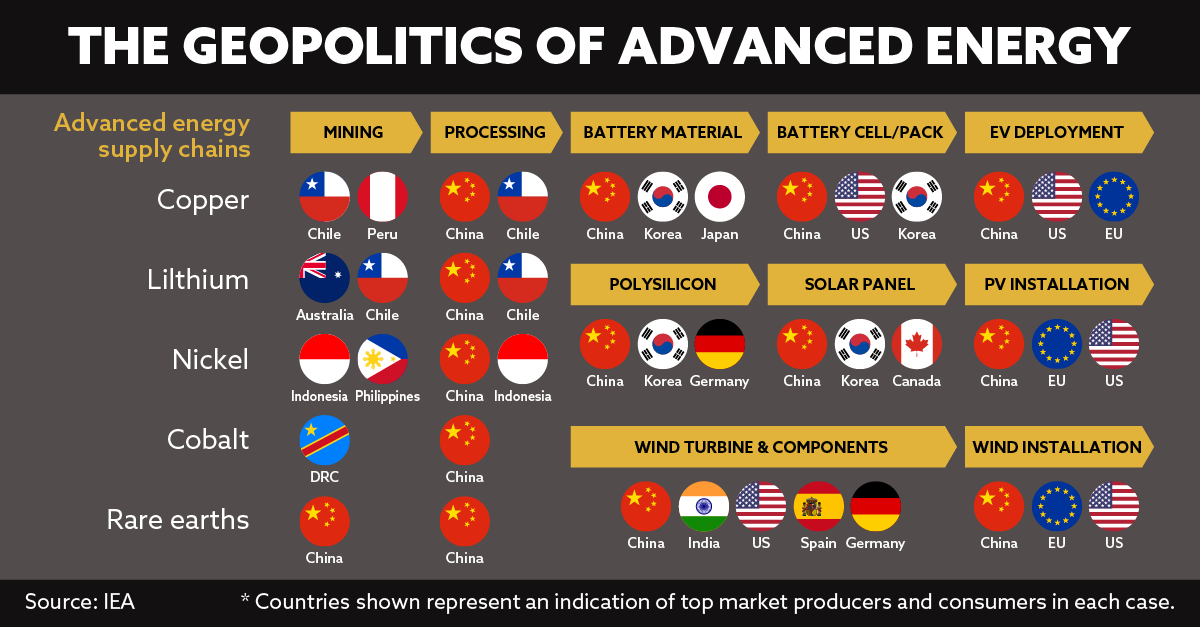To Meet Climate Goals Policymakers Need U.S. Mining
Download ResourceWhat You Need to Know:
- The May 2021 International Energy Agency (IEA) report reveals the global demand for minerals is far exceeding available supply, putting the success of our energy transition at risk.
- President Biden’s plan to combat climate change hinges on technologies that rely heavily on minerals.
- Several proposals under consideration by Congress are at odds with the administration’s agenda, would weaken our minerals supply chains and increase our import dependence.
Letter From The President and CEO:
Within days of President Biden announcing plans to slash U.S. emissions 50% by 2030, the International Energy Agency (IEA) released a new report that raises alarm bells about supply chain risks related to many critical minerals required for that vision. The report warns that the world’s supply and investment plans for minerals fall well short of what is needed to support the deployment of advanced energy technologies required to combat climate change.
The IEA calls on policymakers to provide clear signals about how climate ambitions will be turned into action given the current landscape. IEA’s Executive Director said, “Today, the data shows a looming mismatch between the world’s strengthened climate ambitions and the availability of critical minerals that are essential to realizing those ambitions.”
The report concludes that there is “no shortage of resources worldwide, and there are sizeable opportunities [to] produce minerals in a sustainable and responsible manner.”
Yet, U.S. lawmakers are currently considering several proposals that would obstruct future investments in U.S. mining, from increasing fees and taxes to placing mineral-rich federal lands off-limits. These actions will only increase our import dependence and obstruct the opportunity to build a domestic-driven energy supply chain.
Compounding the problem, the production and processing of many critical minerals are concentrated in just a few overseas countries. If these imbalances continue, price volatility and supply disruptions could impact the deployment of advanced energy technologies and thereby jeopardize efforts to address climate change.
Policymakers must address the disconnect between the administration’s goals and its seeming support for legislation and policies that will doom those efforts.
The IEA report reveals that the world will require huge increases in mineral supplies to meet projected demand for a range of advanced energy technologies.
- Copper demand for electrical grid lines is expected to more than double by 2040.
- Lithium demand could grow by more than 40 times by 2040, followed by graphite, cobalt and nickel (around 20-25 times).
- Cobalt demand could range from 6 to 30 times higher than today’s levels.
- Rare earth elements may see 3 to 7 times higher demand in 2040 than today.
Growing U.S. mineral import reliance isn’t due to a lack of domestic resources. The U.S. is home to an estimated $6.2 trillion worth of mineral reserves. These resources can form the foundation of our advanced energy future and can be accessed while adhering to world-leading environmental, safety and labor standards.
To meet the pending energy transition, we need mining policies that recognize the urgency of supporting domestic mineral production. If policymakers can act quickly, we can invest in a responsibly-sourced, domestic minerals supply chain for an advanced energy future.
Learn more about why made-in-America should mean mined-in-America.
Thank you,
Rich Nolan
NMA President and CEO
